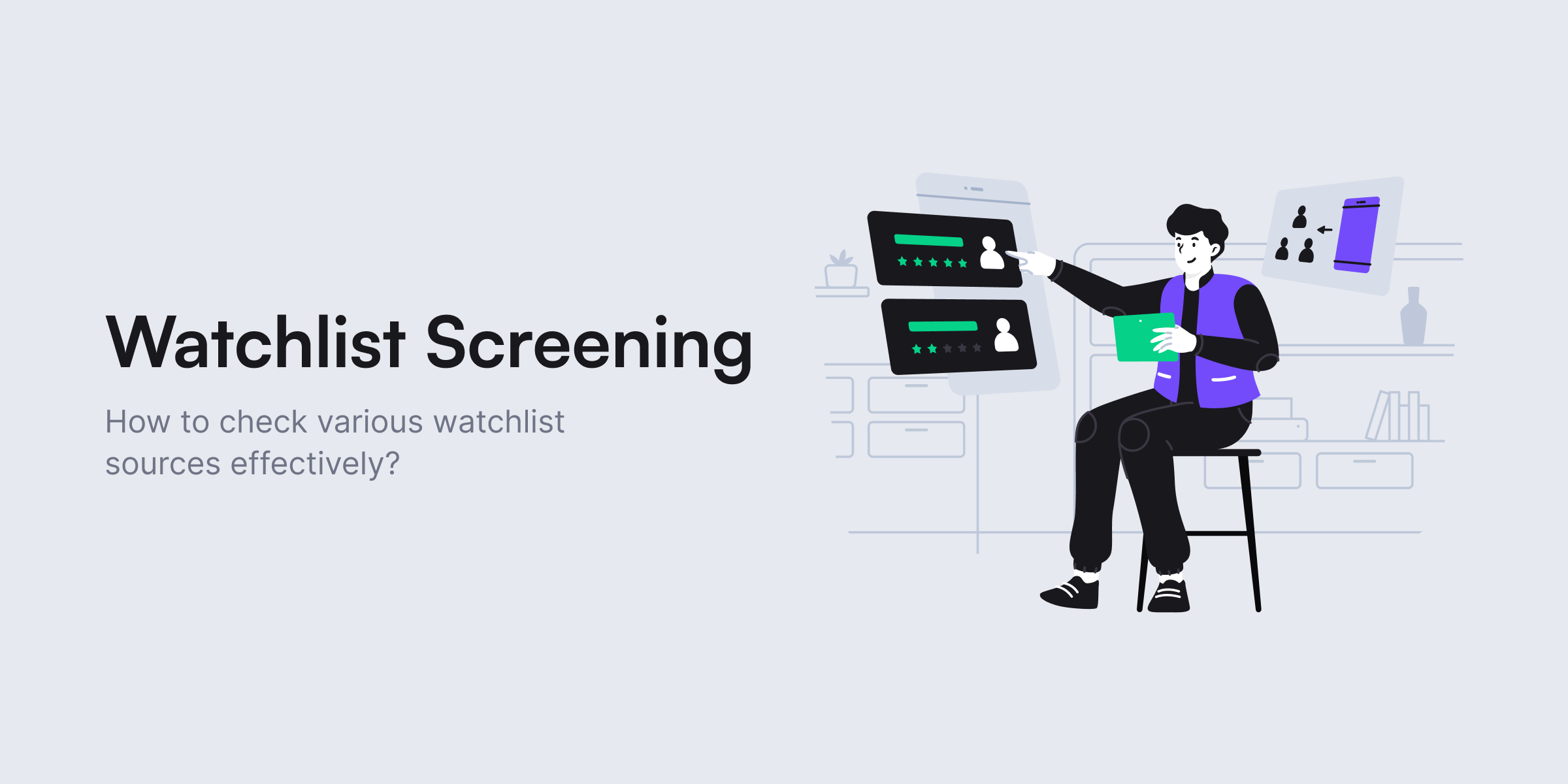Global Watchlist Screening: A complete checklist to keep your business compliant

Strong 8k brings an ultra-HD IPTV experience to your living room and your pocket.
Why Watchlist Screening Is Essential?
A trustworthy customer base is a cornerstone of any stable financial firm. Anti-Money Laundering (AML) compliance requirements like global watchlist screening helps protect financial firms from conducting business relationships with clients that may be involved in criminal activities. Compliance protocols like watchlist screening not just protect the integrity of the international monetary system but it also helps financial firms to avoid dire consequences of non-compliance.
Compliance measures are usually designed to safeguard the financial health of the financial industry and make them stay compliant to regulations in order to avoid billions of dollars of financial crimes that disrupt the international financial system. Trillions of dollars are lost in financial crimes each year, that damages the integrity of financial institutions.
Tools like AML watchlist screening flags individuals and organizations that may be involved in terrorist financing, money laundering, corporate frauds, embezzlement, corruption, bribery and beyond. International regulatory bodies and law enforcement agencies issue a list for the financial firms to cross check their potential clients to mitigate the risks of financial crimes and safeguard their businesses by forbidding offering any financial services to them.
How To Conduct Watchlist Screening?
Cross-checking Names: Watchlist screening softwares offer advance name matching methods of cross-checking potential clients against the watchlists issued by global regulatory bodies and law enforcement agencies. Name of order, common aliases of potential clients and their name spell are carefully cross-checked.
Standardizing Data: Having consistent information across all databases increases the precision of watchlist screening. It reduces the likelihood of spotting important information and enhances the cross-checking process.
Upgrading Watchlist Data: Regulatory bodies and law enforcement agencies around the world keep updating their watchlists. Therefore, to mitigate the risks of financial crimes, staying up-to-date to the latest watchlist databases is vital.
Client’s Behavioral Evaluation: Most AML watchlist monitoring tools assess clients financial behavior by monitoring their financial activities and flagging anomalies in their financial transactions. This risk-based approach helps to safeguard businesses from potential risks of money laundering, terrorist financing and other corporate crimes.
Employing Artificial Intelligence and Machine Learning in Compliance: Financial industry can benefit from advanced technologies like AI and ML ability to learn and adapt by providing them with previous data to predict future behavior and recognize risky clients.
Duplicate Detection: When various databases have information about the same high-risk client, the entity resolution method helps to accurately spot them. And streamline the watchlist screening process.
Evaluating Risk Rate: Before onboarding a potential client, financial firms must adopt a risk rating system to stay vigilant and have a proactive approach in terms of high risk clients. Risk-scores are allocated based on various risk factors which are determined by the firms in line with regulatory guidelines.
Vetting Against Various Databases: In order to avoid false positives, cross-checking potential client’s information against various credible databases issued by authorized regulatory bodies is a key in compliance procedures.
Screening a potential client against watchlists issued by regulatory bodies and law enforcement agencies is a legal requirement for the firms operating in the financial industry. Non-compliance could result in damaging consequences.
Reputation Damage: Providing financial services to clients involved in criminal activities results in firms getting embroiled in money laundering scandals and costly lawsuits by regulatory bodies and law enforcement agencies. This is a heavy cost to pay as companies spend millions of dollars every year to build their reputation and enhance their brand image. Reputation damage alone leads to decline in sales, loss of investors loyalty and even loss of employees.
Astronomical Fines by Regulatory Bodies: Firms that were found breaching regulatory guidelines are slapped with massive fines of millions, and sometimes billions of dollars.
Lawsuits Against Top Executives: In extreme cases, regulatory authorities hold the executives accountable for their negligence of mandatory compliance measures. For example, in the Jeffery Epstein case, one of its top executives, Jes Staley from JP Morgan, who was also a close friend of convicted sex offender Jeffery Epstein was held liable for continuing to provide financial services to Jeffery Epstein despite his suspicious financial activities and court conviction.
Watchlist checks enables financial firms to stay compliant with the Anti-Money Laundering compliance regulations. It helps them to make sure that the customers they are dealing with are not engaged in any financial crime. Financial firms end up paying the price of facilitating the crimes of their clients. The true cost of non-compliance is usually double than the cost of compliance, therefore investing in compliance tools like watchlist screening softwares is the wisest risk management approach for any financial firm to adopt.
Note: IndiBlogHub features both user-submitted and editorial content. We do not verify third-party contributions. Read our Disclaimer and Privacy Policyfor details.



